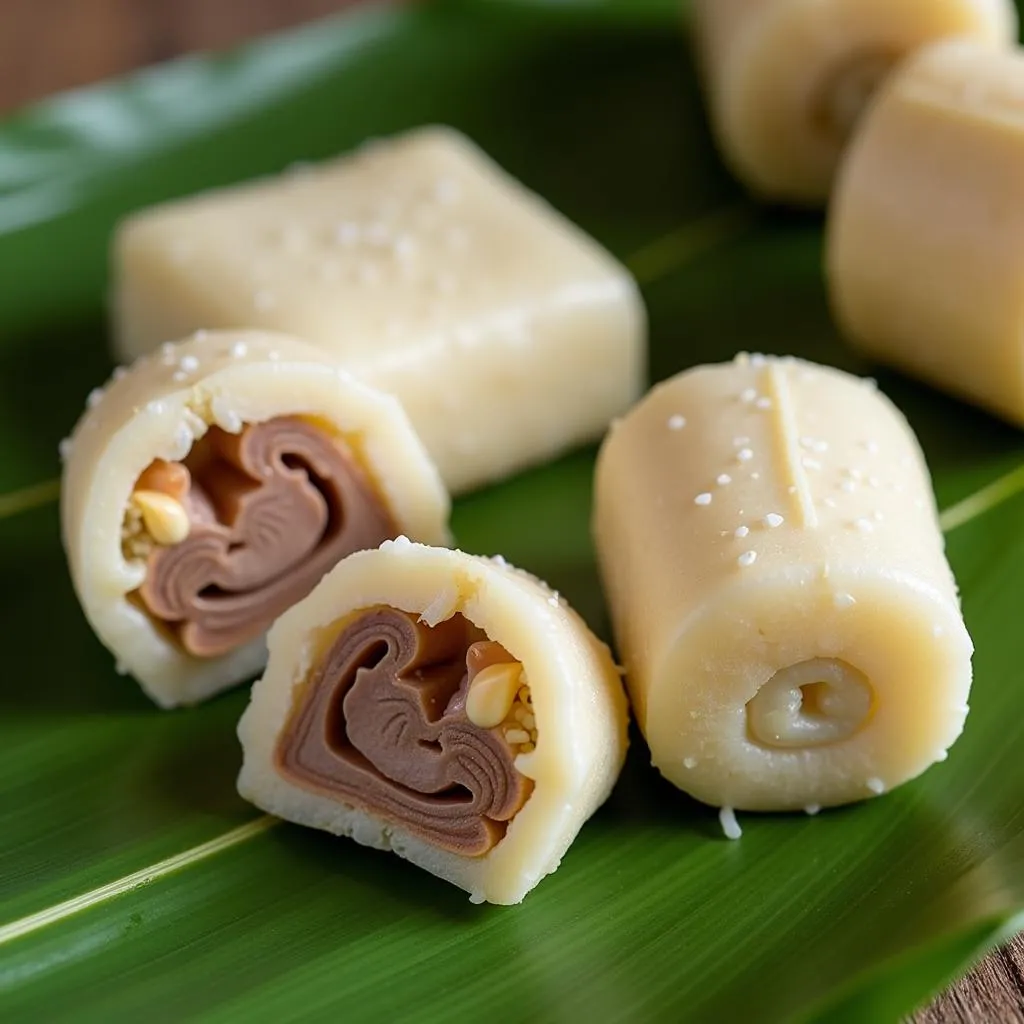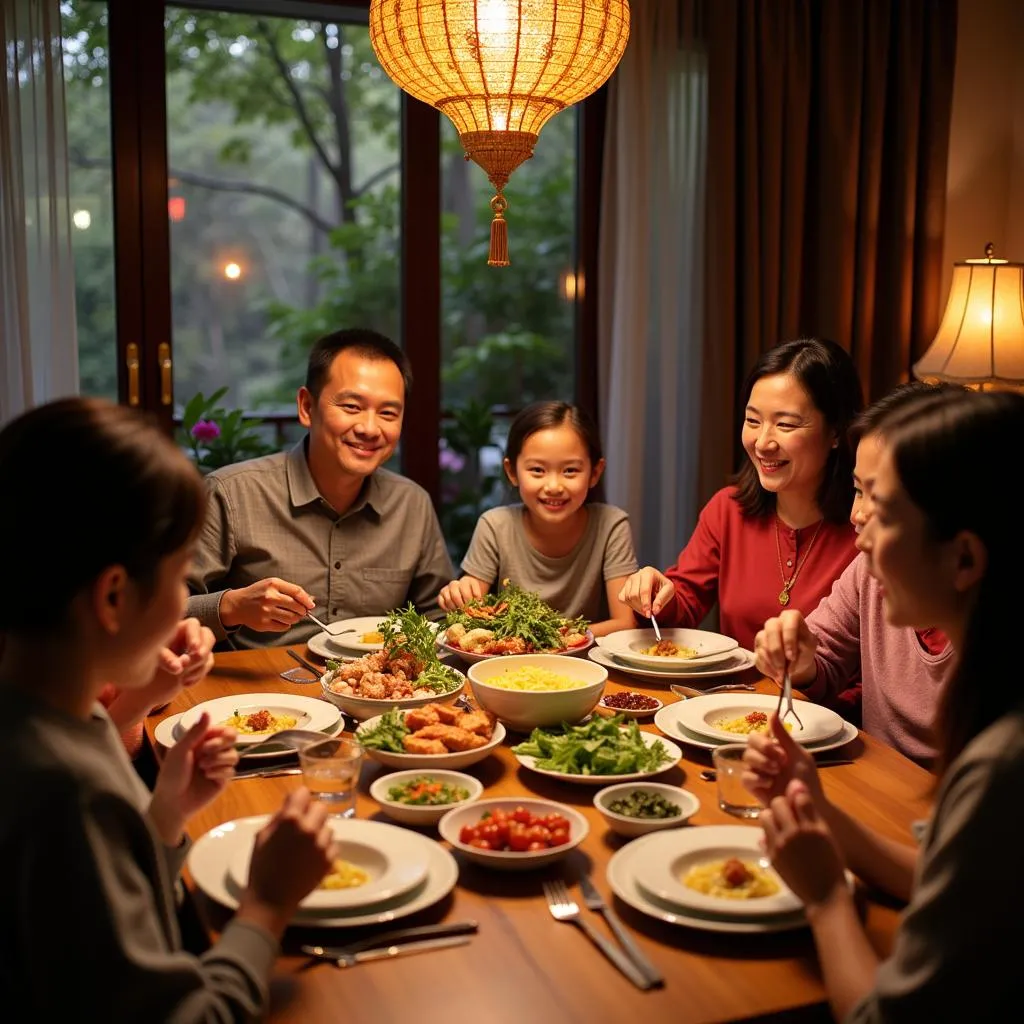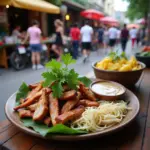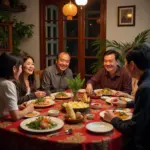“A good meal brings people together, even in remembrance.” This rings especially true in Vietnam, where death anniversaries, or “giỗ”, are deeply spiritual occasions. Food plays a pivotal role in these gatherings, symbolizing the cyclical nature of life and honoring the memory of loved ones who’ve passed. But what makes up a traditional Vietnamese death anniversary meal? Let’s dive into the culinary customs that shape these poignant celebrations.
A Feast of Remembrance: Exploring Vietnamese Death Anniversary Dishes
Vietnamese death anniversary meals aren’t just about sustenance; they’re a culinary tribute, a tangible expression of love and respect for the departed. While the specific dishes may vary depending on regional preferences and family traditions, some staples grace almost every table.
Must-Have Dishes and Their Significance
- Bánh Chưng/Bánh Tét (Sticky Rice Cakes): These iconic Vietnamese treats symbolize earth and heaven, signifying the interconnectedness of life and the afterlife. Their preparation, often a communal effort, strengthens family bonds during this time.
 Banh Chung and Banh Tet on a Banana Leaf
Banh Chung and Banh Tet on a Banana Leaf
Xôi (Sticky Rice): Often dyed vibrant colors like yellow (with turmeric) or purple (with magenta plant), sticky rice represents luck and prosperity. It’s believed to bring good fortune to the departed soul in the afterlife.
Gà Luộc (Boiled Chicken): A whole boiled chicken, often presented with its head and feet intact, symbolizes wholeness and completeness. It signifies the wish for the departed soul’s peaceful journey in the afterlife.
Canh (Soup): A light and refreshing soup, like canh chua (sour soup) or canh bí (pumpkin soup), is considered essential for cleansing the palate and aiding digestion after the heavier dishes.
Món Nộm (Salads): These tangy and crunchy salads, such as gỏi ngó sen (lotus stem salad) or nộm đu đủ (papaya salad), add a refreshing element to the meal, balancing the richness of other dishes.
Tráng Món (Dessert): Sweet treats like chè (sweet soup), bánh da lợn (layered cake), or fresh fruit conclude the meal on a sweet note, signifying the hope for a peaceful and content afterlife.
Regional Variations: A Culinary Tapestry of Remembrance
While the core dishes remain consistent, regional variations add unique flavors and traditions to death anniversary meals. For example, in Northern Vietnam, you might find bún thang (vermicelli soup with chicken and pork) or chả cá Lã Vọng (turmeric grilled fish), while Southern Vietnam often features dishes like bún bò Huế (spicy beef noodle soup) or bánh xèo (crispy savory crepe). These regional specialties reflect the diverse culinary heritage of Vietnam and add a personal touch to each ceremony.
Planning a Death Anniversary Meal: Tips and Considerations
Planning a death anniversary meal involves careful consideration of family traditions, dietary restrictions, and the number of guests. Consulting with family elders or individuals familiar with the deceased’s preferences ensures a meaningful and respectful observance. Many families in Hanoi now opt for catering services to ease the burden of preparation, allowing everyone to focus on the spiritual aspects of the occasion.
 Vietnamese Family Sharing a Death Anniversary Meal
Vietnamese Family Sharing a Death Anniversary Meal
TRAVELCAR: Your Partner in Honoring Memories
If you’re looking for reliable and comfortable transportation for your family during this meaningful occasion, TRAVELCAR is here to help. We offer a range of vehicles, including 16-seater, 29-seater, and 45-seater buses, ideal for transporting family members from different locations in Hanoi to the ceremony. Our experienced drivers prioritize safety and comfort, ensuring a smooth and respectful journey. Contact us at 0372960696 or [email protected]. We’re located at 260 Cầu Giấy, Hà Nội, and our customer service team is available 24/7 to assist you.
Continuing the Legacy: Food as a Bridge Between Generations
Vietnamese death anniversary meals are much more than a culinary tradition; they’re a testament to the enduring power of food to connect us to our loved ones, even in their absence. Through these shared meals, stories are recounted, memories are rekindled, and the legacy of those who came before us lives on.

